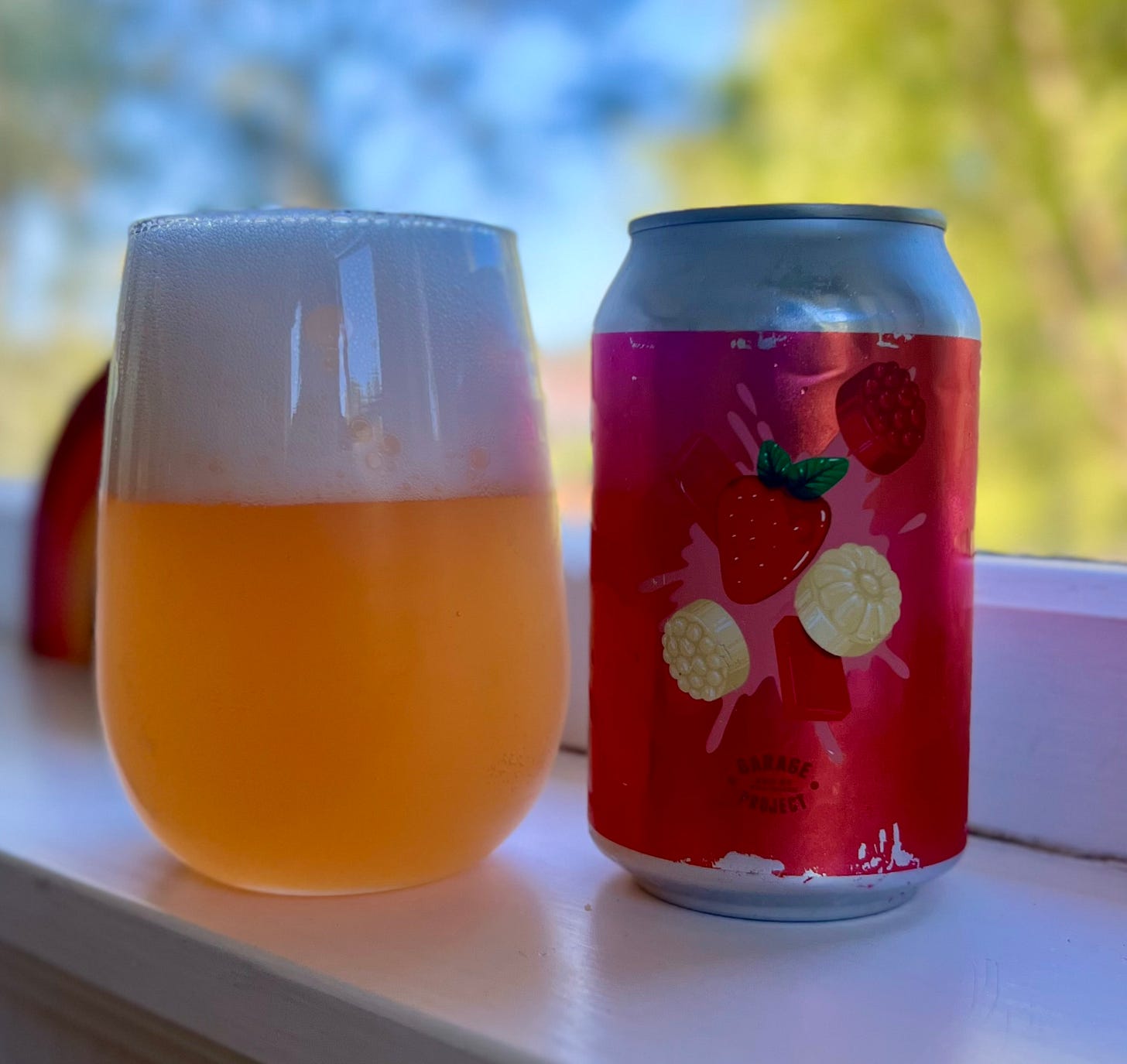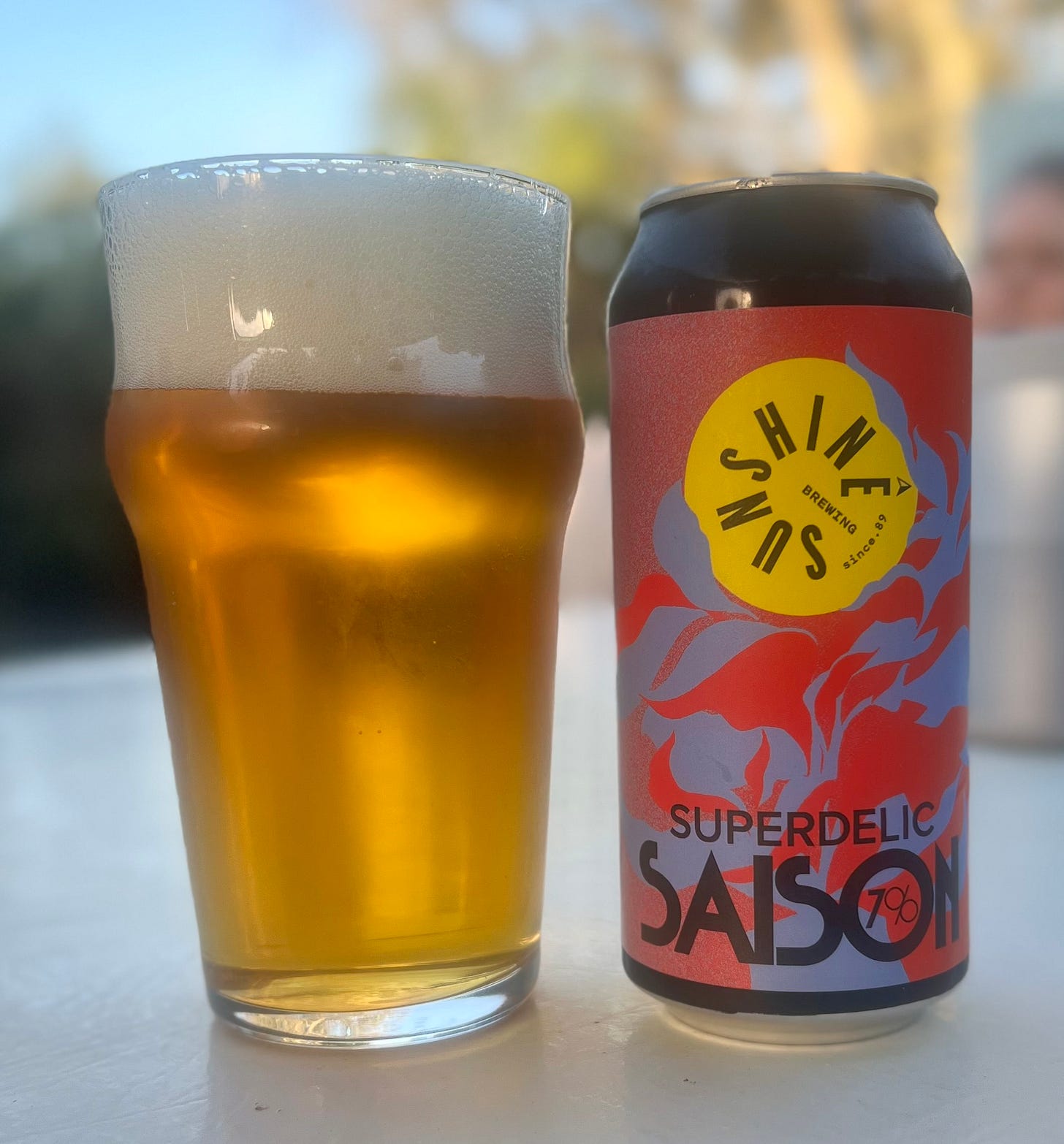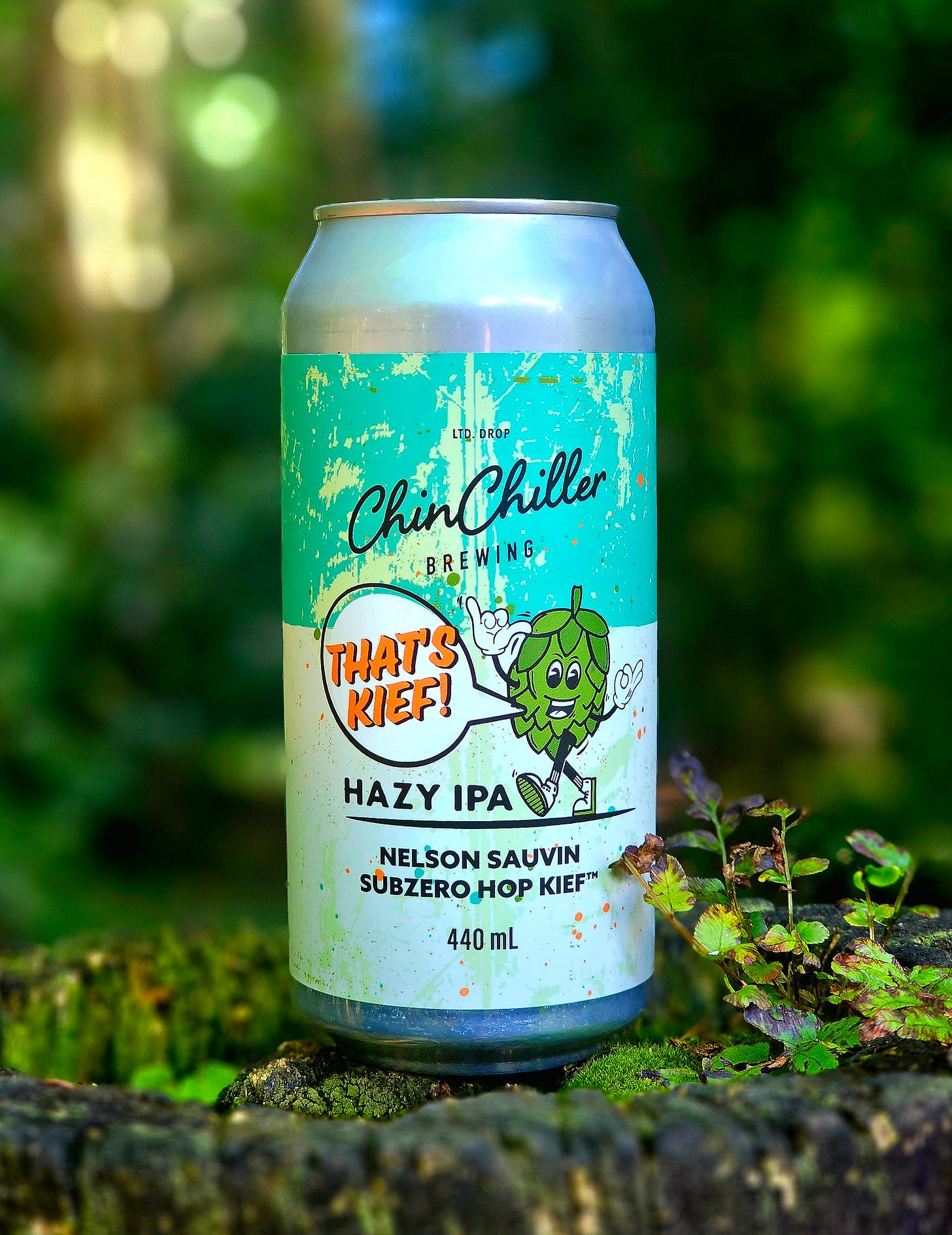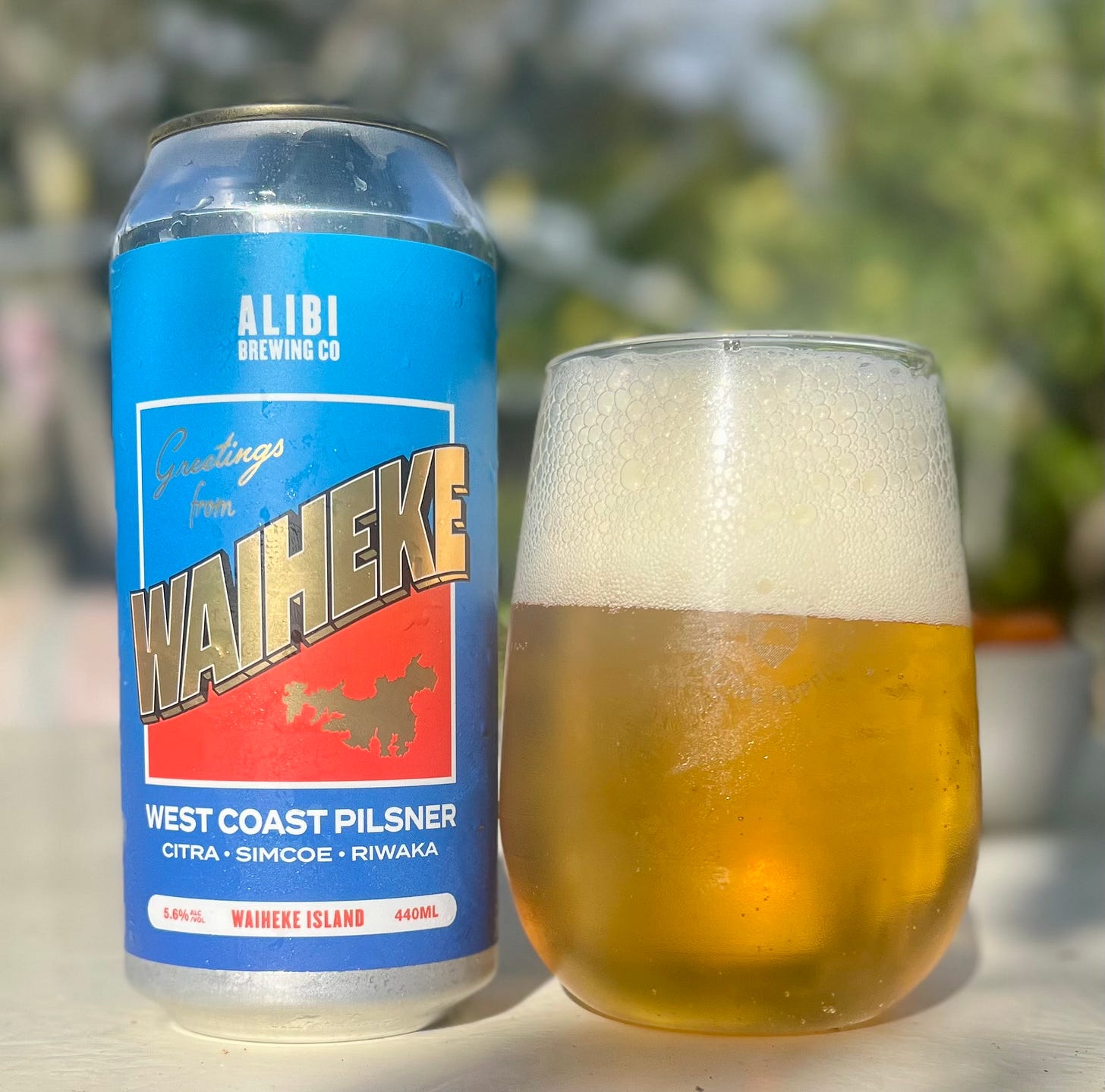Panhead founder Mike Neilson quits business
Tuatara on the move from Kapiti Coast to Brewtown. Kegkoura ticket giveaway. Another hell week in Australia with two craft leaders in voluntary administration. Global player Diageo feeling confident.
Happy Friday beer fans,
I’ve got a load of beers in the recommendation department this week but first, there’s been a major change at Panhead Custom Ales, with founder Mike Neilson leaving the business.
Neilson left at the end of last year, exiting the brewery he turned into a “runaway train” to quote Rory Glass the former managing director at Lion, who bought the brewery for $15 million in 2016.
Neilson stayed on for seven years after signing over to Lion, which was longer than the period he was required to stay under the terms of the deal. By comparison, Richard Emerson was required to stay at Emerson’s for at least five years after he sold his brewery, but 12 years later he’s still there.
It’s not known what Neilson will do next, but another brewing venture is not to be discounted.
Neilson started Panhead in 2013 and quickly turned it into a supermarket success, being the first craft brewery to start selling six-packs at around $23-$24.
His Supercharger APA became a cult beer — loved by craft nerds and blue-collar workers alike. The explosive start tempted Lion to pay $15.1 million in cash for Brand Strong, the Panhead holding company, and there was a deal to pay a further $10 million based on earnings over the subsequent four years.
Lion’s director of craft, Todd Gordon, said Neilson would leave a large hole in the Panhead operation but said Neilson felt it was time to move on. Neilson’s long-time friend Josh Drake, Panhead’s general manager, also left at the same time.
“Mike was keen to close that chapter and move on to other things. Seven years post-sale with Lion was a long time. His last official day was the end of December,” Gordon told me.
While Emerson stayed on as a brand ambassador for his eponymous brewery under Lion, Neilson had a more hands-on in his seven years at Lion-owned Panhead.
“Mike was more on the brewery side,” Gordon said. “He was passionate around recipe development and creativity — that’s what fuelled his fire. And from the brand perspective — that’s also where his brilliance shone.”
With Neilson and Drake at the helm, Panhead operated quite independently from Lion, but with the departure of the pair there will be more reporting lines back to Lion HQ, via a leadership team of operations manager Sam Snowden, sales guru Acky Aspros, and Rebecca Sinclair, head of brand and creative.
“The business structure is now similar to Emerson’s,” Gordon said. “All the creativity still comes out of Upper Hutt, but some reporting lines go back to Lion.”
Tuatara moving from Kapiti to Upper Hutt
Speaking of foundation craft brands sold to global businesses, DB-owned Tuatara are on the move from Paraparaumu, with a plan to relocate to Upper Hutt’s Brewtown.
Regular readers will remember a post last year about a craft brewery for sale in Brewtown but that is NOT where Tuatara are heading.
A spokesperson for DB told me: “We’ll be going into a pre-existing site in Brewtown, but won’t be able to confirm anything until all the details have been finalised. It’s not the brewery [for sale] though.
“As part of the process to find the right facility and location we canvassed a wide range of locations and options. Brewtown was the clear winner in terms of meeting our needs from both a production perspective as well as fit within the craft beer community. It also allows us to design and build a brewery from the start to be efficient, safe, and sustainable.
I asked them about a potential hospitality side of the business: “We can’t confirm anything at this stage, but we’re excited about the new possibilities this site could offer in terms of future innovation.”
Some Tuatara Hazy Pale Ale is currently brewed in Timaru in order to meet demand but there are no plans to shift any other Tuatara brews to either Waitematā or Timaru.
The current Tuatara brew-kit at Paraparaumu is well past its best according to Tuatara head brewer Paul Roigard.
There are 19 staff at the Paraparaumu site.
“We are still working through the various options open to affected staff, which will be determined by factors such as how many are willing to relocate to the new site at Brewtown,” the spokesperson said.
“The wellbeing of our people remains our top priority and we are supporting them through this transition as well as hoping that many do wish to relocate.”
Beer of the Week No 1
Today marks the start of the Wellington-hosted New Zealand Fringe Festival, so here’s a beer brewed specifically for that event. Garage Project Lolly Scramble is one of those madcap beers in terms of ingredients and processes and I guess that means it shares some of the characteristics of the extravagant acts on show at the fringe festival: frivolous & fun.
While described as a sour beer, this is far, far away from mouth-puckering: more like lemonade than lemons. The brewing process involved putting literal lollies into the beer — acid drops, raspberry drops, gummies and marshmallows. The result is a beer that’s bursting with sweet candy, with a lush creamy texture. There’s a big hit of raspberry up front, some sweet lemon and soothing vanilla. It honestly put a smile on my face. And what’s more, it’s only 4.2% so there’s lots of flavour punch on a relatively low ABV. If you can’t get to the Fringe Festival to feed your tastebuds, it’s available in select New World stores.
Kegkoura ticket giveaway
Heads-up if you’re near Kaikoura in a couple of weeks — you have to call into the Emporium-hosted Kegkoura festival that’s back for its seventh year on Saturday, March 2.
And if you’re thinking about going, I’ve got a subscriber-only offer: two free double passes to the first 2 subscribers who email me at michael @ hoppiness.co.nz
Kegkoura is a great excuse to spend a weekend in one of New Zealand’s most beautiful coastal towns. It’s one of those nano-festivals that, to me, are part of the future fabric of the craft experience, an intimate experience, with just Emporium and four other Canterbury breweries — Concept, Wilderness, Beers and Two Thumb. And that, my friends, is a beautiful line-up of breweries.
There’s awesome local food, great live music and unlimited mini golf as well.
Plus, in a twist for a festival: this is cash-only. No tokens, wristbands etc. There’s an eftpos on site for cash withdrawals.
Organic beer update
Just a round-back on last week’s story on Sawmill’s upcoming Organic Pilsner. I was remiss to note that Garage Project had a brief flirtation with organic, a beer called Hakituri, but according to Jos Ruffell from GP, it never got “traction”.
Tim’s Beer of the Week
Christchurch-based reviewer Tim Newman took a trip out to Banks Peninsula recently to check out newcomer Thief Brewing. And he came away mightily impressed with their Tropic Myopic West Coast Pilsner.
“West Coast” pilsner is still something of an emerging style, with the first few examples popping up at the tail end of last year. While its attributes are yet to be entirely codified in New Zealand, the trend is towards big, maximalist pilsners that push the New Zealand Pilsner style into even stronger, hoppier territory. Tropic Myopic (6% abv), a new release from Banks Peninsula-based newcomers, Thief, does exactly that, sporting a downright explosively aromatic aroma, with soaring lemon and lime before zesty passionfruit and crushed tomato leaf. It’s really quite remarkably akin to the nose on a tropical Wairau Valley sauvignon blanc. The palate moves a little more slowly, with intensely ripe tropical hops over a hefty and smooth malt base. While this may be as far from a traditional pilsner as one can get (while still drinking beer) anyone out for a clean, superbly hop driven drop will find everything they need here.
Low down on low carb
I’m always curious when mainstream media “catches on” to a trend. In this case it’s low carb beer. And I know a lot of people poo-poo low carb beer, but it’s a thing, and it’s not going away anytime soon. I do feel this story was handed up to the Herald on a plate by DB, but Peter Bircham from Garage Project gets a look in around their Good Shout offering.
Low-carb beer: Is it really better for you - and why is it so popular? - NZ Herald
Beers of the Week 2 & 3 — a tale of two saisons
It’s not by chance I tasted these two saisons so closely together — I love Saison, so there’s always a chance I’ll be drinking one. But these two, back to back, were quite the exercise in compare and contrast.
First up Peppertree Saison from Laughing Bones. Apologies for not having a picture of this.
This was dry, dry, dry. And herbal spicy from the addition of horopito and kawakawa plus some rye malt. So they’ve doubled, and tripled, down on the spice-pepper characters and it works superbly. It’s dry (did I say that already!), spicy and refreshing. And I do a like a Saison with a few extras dropped in, as it talks to the tradition of these beers utilising what was at hand come the end of harvest. I notice it’s sold out on the Laughing Bones site, which is a shame as at $8.50 a can, it was a steal.
Now, to the other end of the spectrum and equally intriguing is Sunshine Brewing’s Superdelic Saison. This takes the sweeter, perfumed, bubblegum notes that you can get in these farmhouse styles and then Sunshine have done their own version of a double down by using Superdelic hops to provide more perceived sweetness and more of that candy and fruit character. Totally different but totally delicious.
Another bad week in Aussie craft
It's been another hell week in Australia with two big-name craft breweries going into voluntary administration.
The most shocking news was from Hawkers, who will be familiar to many Kiwis as they’ve had a strong relationship with Liberty, including brewing Liberty beers for the Australian market.
Hawkers founder and managing director Mazen Hajjar said in the statement: “Post Covid has been a challenging period with bigger players increasingly restricting access to taps and shelf space, combined with broader economic pressures, including increased input costs and taxes. However, we are confident that the restructuring will ensure the business is in a stronger position to fight these challenges going forward.”
Speaking to The Crafty Pint, he said Hawkers' ongoing growth would be “easier and much faster if we had better access to market”, citing not just the tap contracting issue (with so many taps controlled by globally-owned breweries) but also the rise in craft beer “homebrands” produced the country's major retailers.
The phenomenon of homebrand, or private label, beers is something that hasn’t happened here yet — and I hope it never will. And it’s not just the Aussie supermarkets that have their own lines in beer, retailers like Dan Murphy’s are also in that game.
Hajjar spoke at last year’s BrewNZ Expo noting that while the costs to brewers had gone up substantially, revenue was lagging, and it’s a story he told to the Crafty Pint as well:
The Exploding Cost Of Brewing Beer - The Crafty Pint
And just a couple of days later, Big Shed Brewing in Adelaide also appointed voluntary administrators, despite growing to become one of South Australia's biggest craft breweries.
Co-founder Jason Harris said the challenges facing the brewery can be traced back to 2019, when they invested heavily in the business after moving from their original home to their current one in Royal Park.
Describing the past few years as “a rough ride”, he said investment in the expansion of the business just prior to Covid proved untimely.
Dusty’s Beer of the Week
That's Kief beer alright! Poppin with subzero hop kief this 6% haze boi from Christchurch’s ChinChiller takes Nelson Sauvin to the next level, there's a definite concentrated elevation in the Nelson Sauvin flavours — intense passionfruit initially followed by grape & tangerine, a continous tingly carb and a wash of citric bitterness an oily mouthfeel round out a crusher of a hazy.
Bud Light’s Super Bowl bashing
Bud Light was dethroned by Michelob Ultra as the America’s best-selling draught beer on Super Bowl Sunday as drinkers watched the Kansas City Chiefs defeat the San Francisco 49ers in overtime, according to on-premise data firm BeerBoard.
Draft volume of Bud Light declined 31.8% year-over-year (YoY), as the company nears the anniversary of the conservative-led boycotts that have left the former No 1 brand bleeding out at retail.
However, Bud Light’s replacement was still in the AB InBev family of brands, with Michelob Ultra claiming the top draught spot nationwide with “a modest” +0.7% increase YoY.
Positive signs for the industry
Big beer can put a spin on anything, but I do wonder if the comments attributed to Debra Crew, the new chief executive of Guinness-owner Diageo, might be on the money.
In contrast to the view that people are not buying beer because they have less discretionary dollars in their pocket in this global inflationary environment, Crew took the view that beer is in fact benefiting from people having less money.
She presented data that showed drinkers in Latin America were buying fewer premium spirits in favour of beer, while in the United States, growth of Guinness outstripped that of tequila and vodka. Last week, Carlsberg also noted drinkers’ changing habits, and upped its medium-term sales guidance from 3% to 5% to 4% to 6%, Reuters reported.
Heineken, however, put a spike in that balloon, as shares in the world’s second-largest brewer fell 5% after it reported poor financial results from 2023 with volumes down 4.7%, in part caused by its decision to hike its prices to offset rising costs.
Staying with Diageo briefly, but tangentially, it’s kudos to the sub-editor at the Irish Independent who came up with the headline for a story on the huge growth of Guinness 0.0 which now represents 4% of all Guinness production:
Zero Dark Thirsty — Diageo aims to have its Guinness 0.0 stout in 2,000 Irish pubs, hotels and restaurants
Beer of the Week No 3
Greetings from Waiheke #3 is one of the last brews to have experienced the deft touch of brewer Bernard Neate before he left Alibi. So that in itself is a reason to grab one. But also. It’s nice. Riwaka, which brings notes of grapefruit undercut with aviation fuel, dances with Citra and Simcoe for an explosion of sweet citrus and that desirable “dank” quality you get in American IPAs. It’s oily and resinous but mops up cleanly with a dry-bitter finish. Another one available from select New World stores.
Rogue cleaning up — a sign of the times?
The other week I shared a story from the New York Times about breweries and pubs in the US cutting back their offerings, with the belief that consumers can get overwhelmed with choice.
And now, in a story from Jeff Alworth at Beervana Blog, I see Rogue Ales doing the same thing.
Rogue was one of the first breweries to go heavily into new beers — this dates back twenty years or more. Ultimately, that created a lot of noise. Now the brewery is stripping back and focusing. Beyond the Dead Guy line, there are just three core beers: Batsquatch, Honey Kolsch, and Hazelnut Brown. They’ll have limited seasonal offerings, as well, but everything else is going. “We’re really cleaning up the portfolio,” Rogue president Steven Garrett said. “Everything [else] we’re in the process of discontinuing.” This is partly an acknowledgement that with so many breweries in the marketplace and shrinking shelf space, breweries have to be selective and focused. But beyond that, it gives their pubs new relevance — that’s where you will find a wide variety of one-offs, specials, experimental beer, and revivals.
For craft beer drinkers who caught the early wave around 2008-2012, Rogue was a key player in the import market here, with Beers Without Borders bringing in a lot of their beer. In particular I remember outlandish (for the time) beers such as Maple Bacon Doughnut Ale and Siracha Hot Stout.
But a look at their online store today reveals a relatively tame line-up, even in the seasonals.
Rogue’s Slow, Deliberate Reinvention — Beervana (beervanablog.com)
Bonus Beer of the Week
Speaking of American legends, I loved Small Gods’ Arms Race, a tribute to Russian River’s Pliny The Elder.
For reference, here’s the original:
And here’s Arms Race:
Like Pliny The Elder, Arms Race features Amarillo and Centennial hops but goes with Cryo Citra and Cascade as opposed to CTZ and Simcoe. But we’re in the ballpark of big hop bitterness and a huge malt sofa for it to rest on. At 9.3% it’s bigger than Pliny’s 8% and the name references the early-20th century “arms race” in terms of IBU, with this one clocking 100 bitterness units, the same as Pliny. All up, a great drinking experience! So hat-tip to Small Gods on this one.
That’s all from me until next week,
Michael Donaldson
Publisher / Editor Pursuit of Hoppiness














